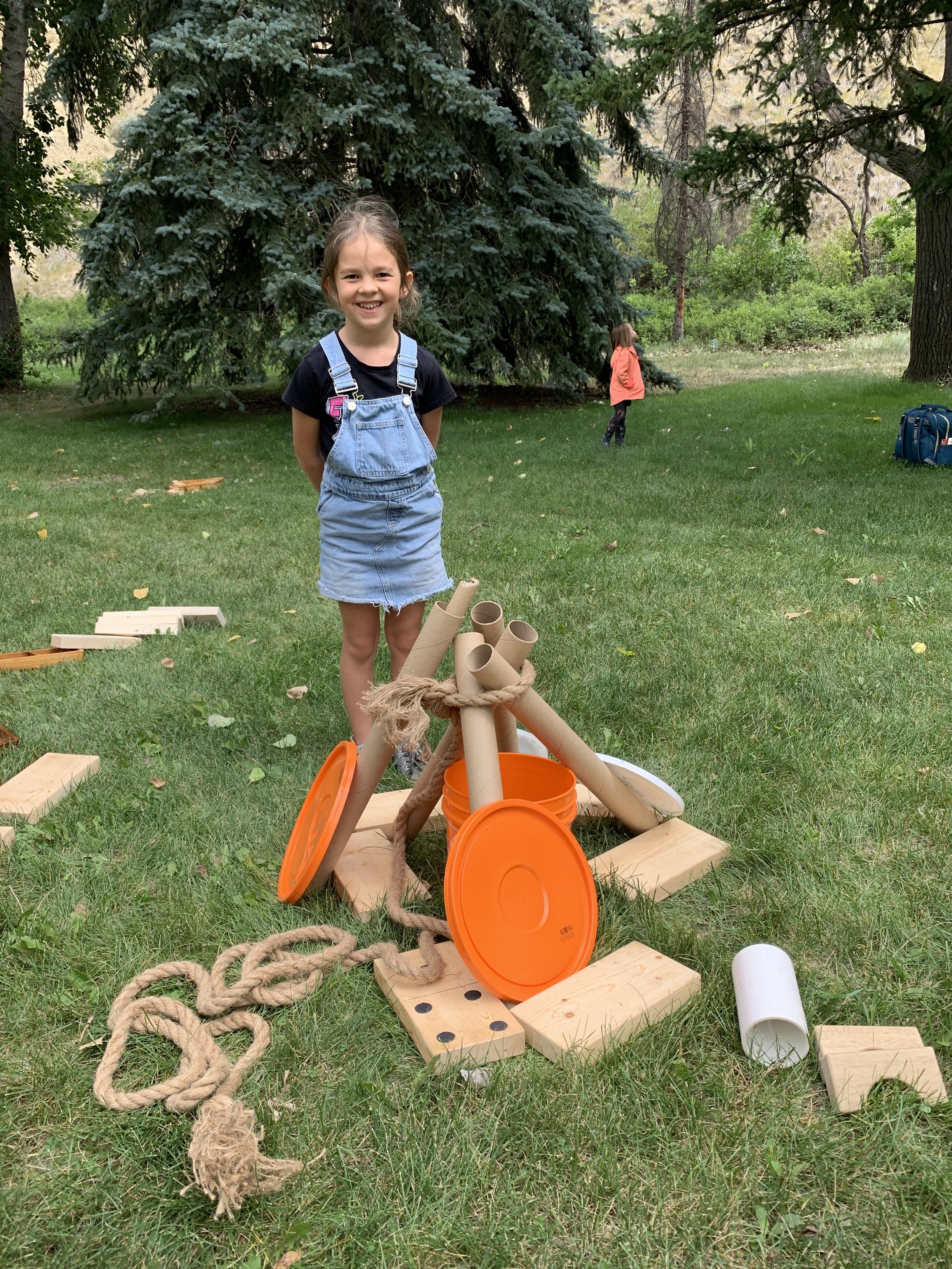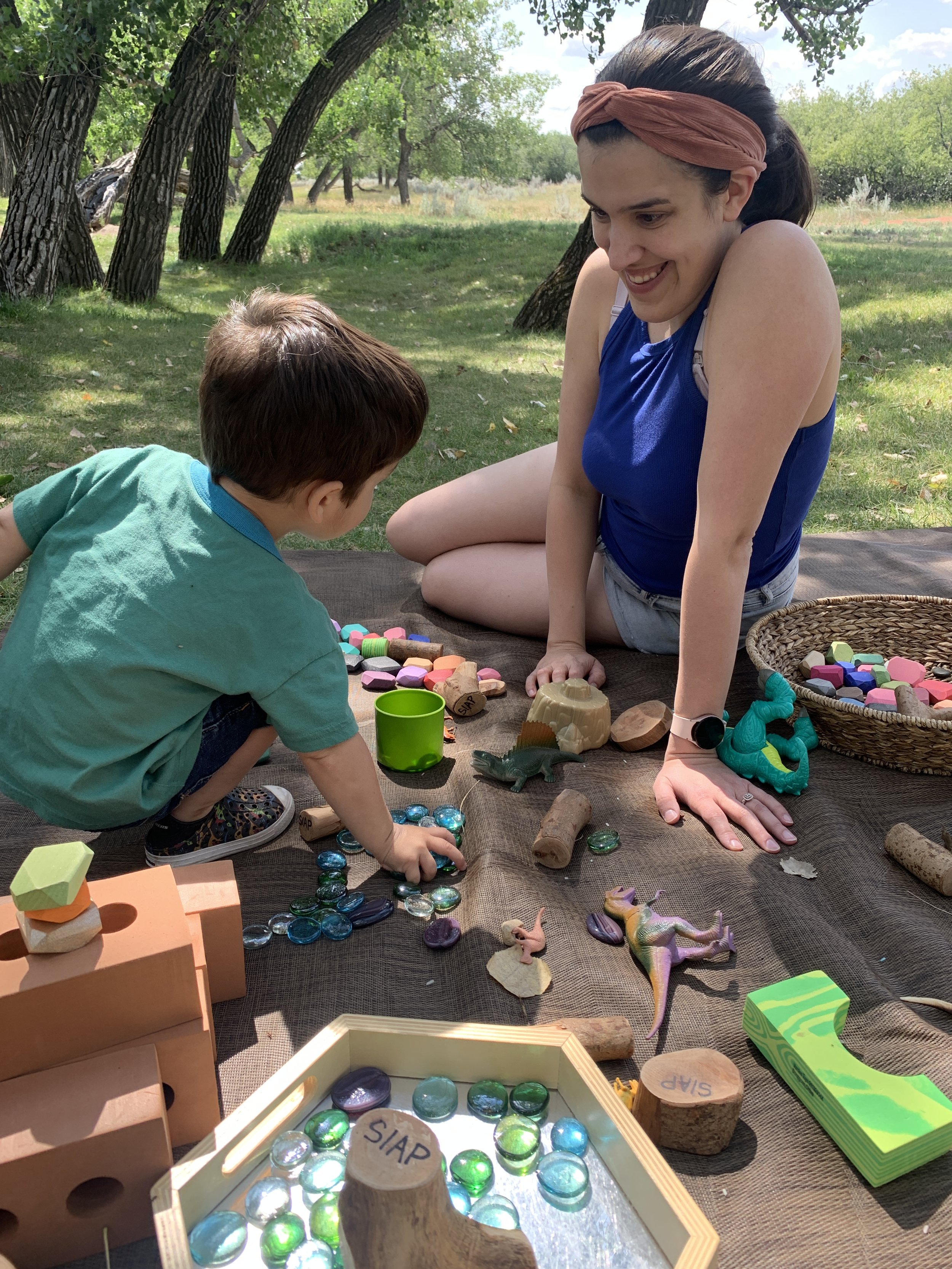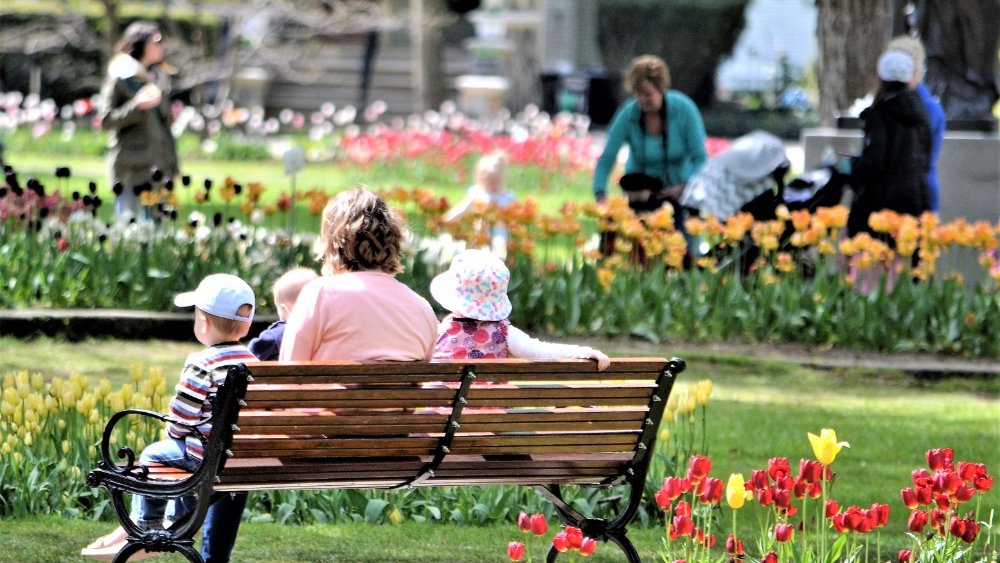One Meeting and $3,000 Created More Value for This City Than a $300,000 Project
Children and parents play at a pop-up play program in Medicine Hat, AB.
After one meeting and a little over $3,000, Medicine Hat, Alberta, decided to take a bottom-up approach to invest in a community-led program that has made better use of their public parks and children’s playgrounds, proving that a city doesn't have to invest millions in building big and new infrastructure to create value.
“The playground itself doesn't necessarily do anything,” said Scott Richter, business and innovation manager for the Parks and Recreation department of Medicine Hat. “So you could spend $300,000 on the playground, but it in itself doesn't create vibrancy or multigenerational interaction. But intentional programming will.”
To create value, cities tend to rely on building structures—such as community centers and playgrounds—with the intention that people will make use of them. While these efforts are not inherently bad, they can be a time-consuming, expensive, and a high-risk first step if every aspect of the plan doesn’t follow through. Put simply: expensive facilities aren't always used and their maintenance costs are rarely considered. Over a period of time, especially if the project is underutilized, it becomes impossible for the city to afford what is built.
“Build it and hopefully they'll come, that's not a good investment,” said Richter. “If you build the thing, and [the people] are like, ‘Well, this is useless for programming.’ They're not going to use it.”
So, Medicine Hat is trying something different. Instead of jumping to replace every playground within the city, they’ve replaced just one and decided to make a small bet on a local mother who wanted to get families outside and using under-visited city parks.
“Before we go all in on all these replacements, [we want to] look at what the true value for the community is like,” said Richter. “What do people really want? And I think they want more interaction.”
After going with her son on a playground tour, where they visited most parks within the city over a period of time, Jennifer Usher noticed not many families seemed to use the local parks. “It was the summer and no one was at the playground … except some of the big ones.” She started to wonder, “What steps could we make to get families out? Maybe to playgrounds they haven't seen.”
Using tools and contacts she gained from her previous experience with children’s community programs, and her position as the community programming facilitator for the public school division, Usher reached out to the city with a proposal called “Free Play.” The idea of Free Play was born out of a community need: where other parents expressed a wish for more activities to keep children occupied in the summers.
Free Play would take only 30 minutes for set up per session, 30 minutes for tear down, and around $3,000 a year for supplies and facilitation. Usher wanted the program to pop up at different parks throughout the city. This would not only bring more awareness to the wealth of the city’s local parks, but create opportunities for parents unable to drive their children longer distances for free events.
After just one meeting, the city decided the small bet on Jennifer Usher’s idea was worth it.
“Typically, what I've experienced with cities is you can go and ask [for something] and they can say yes or no,” said Richter. In many cases, cities will say no to locals' requests, or at least take many months worth of time to come to a conclusion. Whether it’s for a simple design change to make a street safer, or the removal of unnecessary law constraints that hinder small businesses, or investing in programs for kids, asking the city for improvements can be a bureaucratic waiting game. “But in this instance, we said, let's just go try this.”
Usher’s proposal made sense to city staff, because even though they had replaced one local playground with a new natural playset, there were still many other parks needing maintenance, or fresh ideas.
“We have 77 playgrounds in Medicine Hat,” said Richter. And to replace every aging playground, “it’s absolutely unaffordable” overtime. So, instead of rebuilding every single park structure, “as these playgrounds age, we’ve thought, can we not necessarily have a structure but be quite intentional about supporting programing? Which would probably have way cheaper costs but end up worth more value.”
Medicine Hat took this step because they’re beginning to break away from the notion that “we have to build something” to make a place more valuable. Instead, they can make better use of the facilities they already have.
Since the city’s small investment, the entire program is rolling like a snowball of growth as other members of the community have been voluntarily adding to the efforts. Whether it’s through donating toys, tires, buckets, other random building objects, or even sending volunteers, locals are communicating to the city that they appreciate this investment. And they want to be involved to make it even better.
“They [the local trauma-healing space known as Sanare Centre] sent someone to almost every single play session to help with setup, with cleanup, with interacting with the children, and it has just been a real, organic connection,” said Usher.
In addition, “Our local tractor company gave me a steering wheel from a tractor,” said Usher. “And a couple of families donated things.”
The program encourages children of all ages to join in their events. With blankets for babies, toys for younger children, and building objects or paint for even older children, the multigenerational interaction has created something special in Medicine Hat.
“You see babies, and then you see 13-year-olds building with wooden spools and boards and they're trying to stand on top of it and not fall over,” said Usher. “ We also had grandparents bringing their grandchildren as well. So it's just a really nice mix.”
The best financial investments cities can make are small investments, with low risk and a guaranteed positive return. The program Free Play may have started out small, but it is an investment that is directly for the people. And because of its bottom-up, simple start, it can easily grow and adapt to fit community needs.
“The conventional approach to creating value is to measure success by how much we spend without understanding whether this investment will address neighborhood needs,” said Strong Towns Director of Community Action Edward Erfurt. “We think we need big projects to demonstrate we have accomplished something. This nimble approach may not be big dollars. However, the success can be measured through the number of children and families that will have the opportunity to engage in this program. This $3,000 investment will be accessible across the entire community.”
“I see so many potentials in this small, small thing,” said Richter.
Read more about how small bets are the best approach for cities in “Build Community Wealth with Incremental Investment,” and learn more about the Community Action Lab, Strong Towns’ most comprehensive resource for catalyzing change in your community.









Seairra Jones serves as the Lead Story Producer for Strong Towns. In the past, she's worked as a freelance journalist and videographer for a number of different organizations. She currently resides between small-town Illinois and the rural Midwest with her husband, where they help manage a family homestead. When Seairra isn’t focusing on how to make our towns stronger, you can find her outside working on the farm, writing fictional tales in a coffee shop, or reading in a hammock.